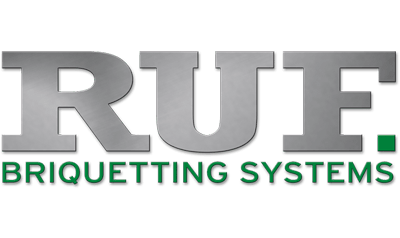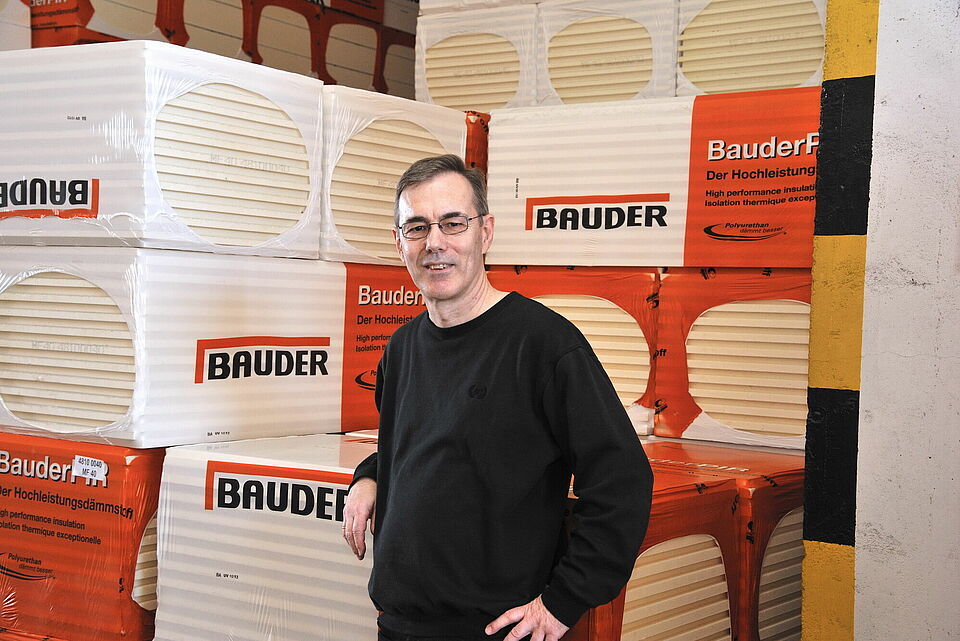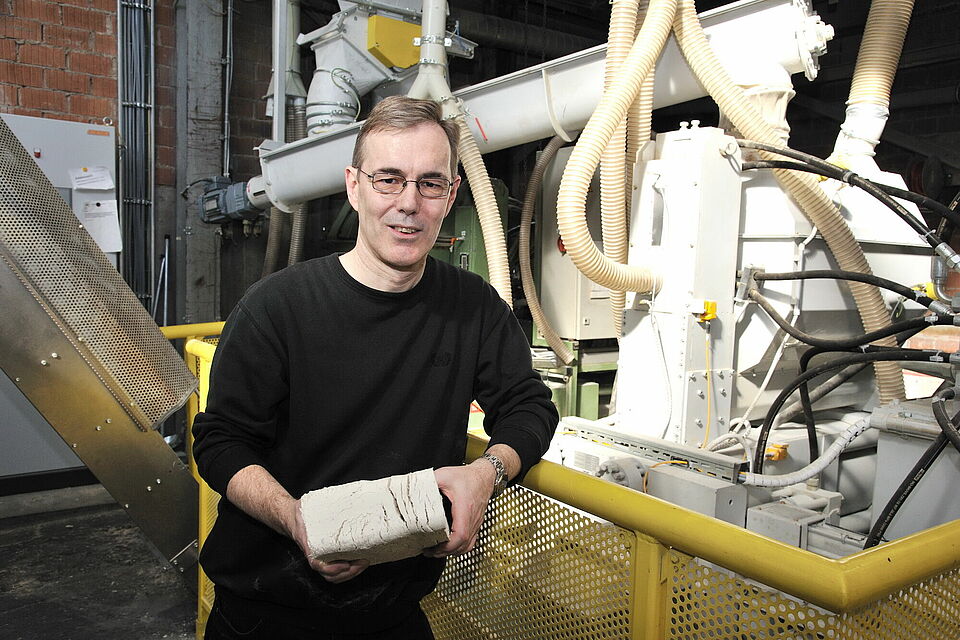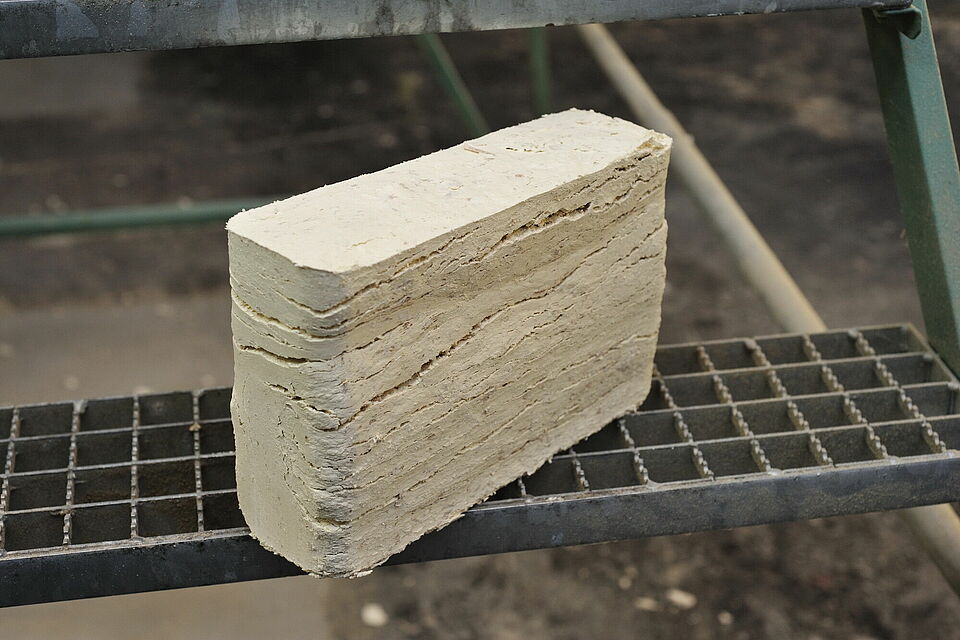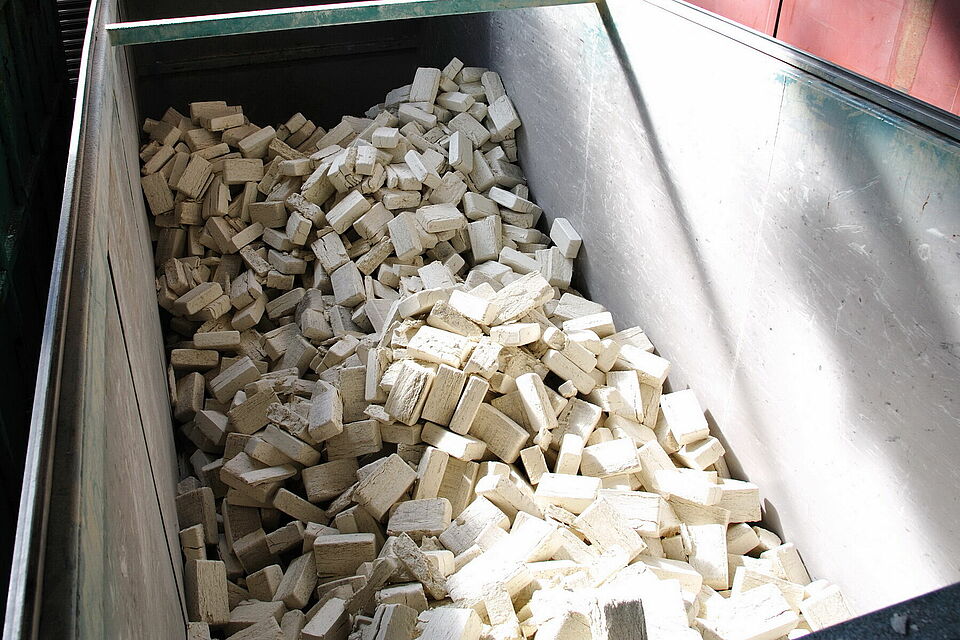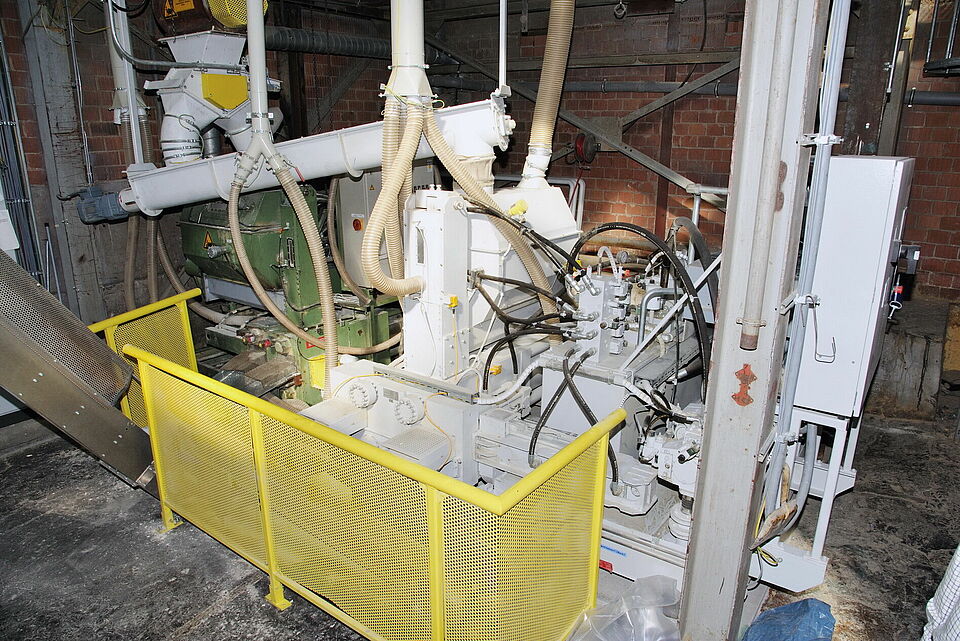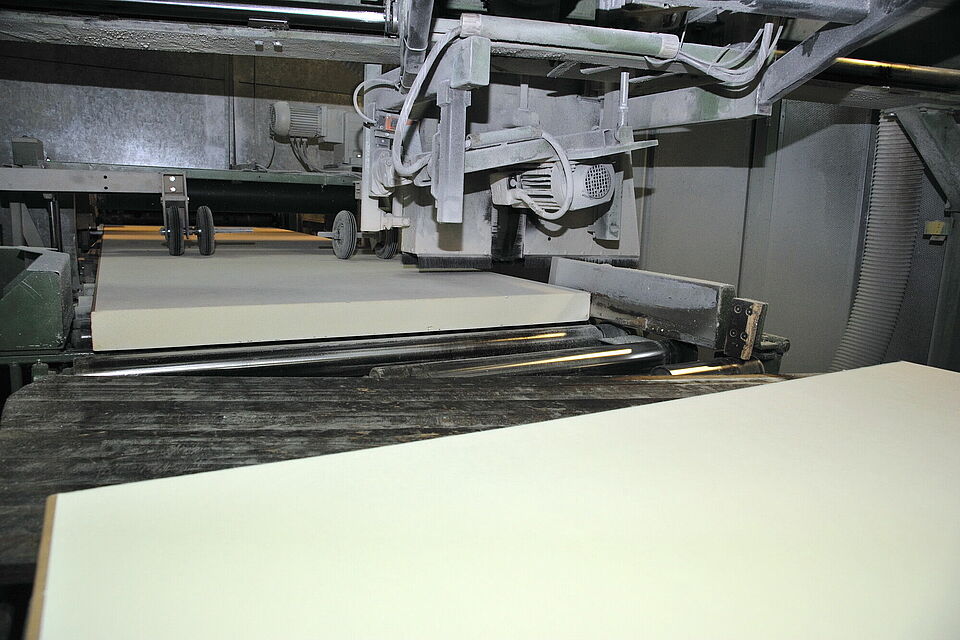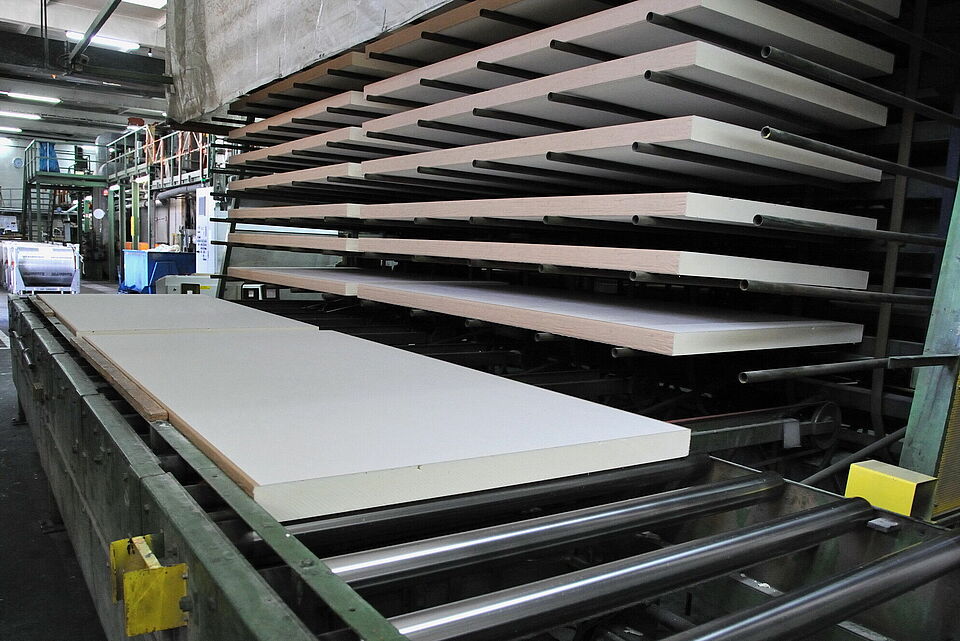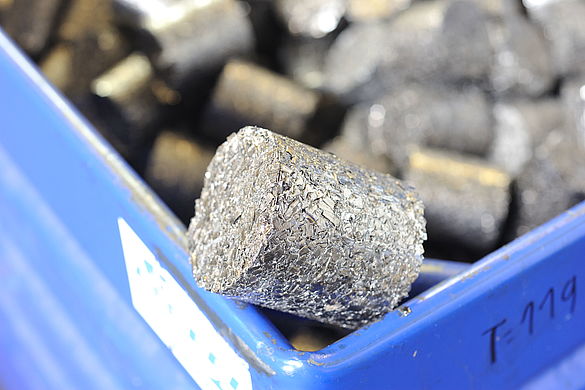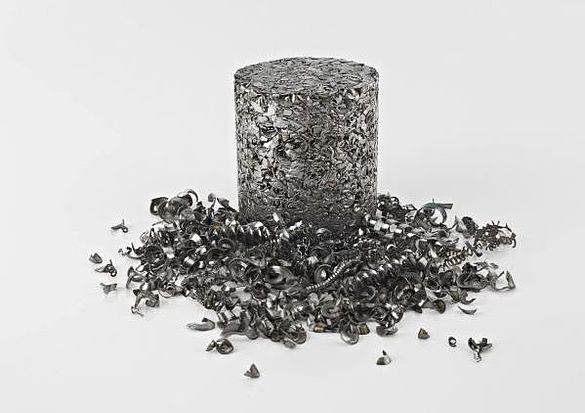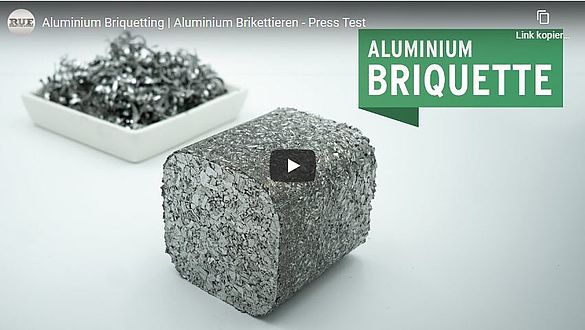RUF briquetting press injects cost effectiveness into the further processing of high-volume production waste
A manufacturer of roof systems, Bauder has avoided high transport costs by running RUF briquetting presses. At this Stuttgart company, the dusts generated by cutting and milling operations on rigid polyurethane foam boards are pressed into compact briquettes. A subsequent processor then retrieves the briquettes which it then reuses as a valuable raw material. In bulk form, these dusts would entail high transport costs.
Whether flat or steeply pitched roof, there is a high probability that its thermal insulation and sealants are products originating from Stuttgart-Weilimdorf. There, in the north of Stuttgart, the German city and capital of Baden-Württemberg, Paul Bauder GmbH & Co. KG (see box) manufactures its sealing, insulating, greening, and power generating materials for roofs.
The most important products are rigid polyurethane (PU) foam boards for thermal insulation as well as bituminous and plastic sheeting. Gerhard and Paul-Hermann Bauder, the grandsons of Paul Bauder and third-generation managers of the company, see a particular strength in their cross-product systems expertise. For instance, all functional laminations above the roof deck originate from a single source.
Paul Bauder GmbH & Co. KG …
… produces primarily roof systems. This family-owned enterprise operates as the single source for extensive advice and all sealing, insulating, greening, and power generating materials. Bauder employs about 800 in total, of whom about 250 work at the head office in Stuttgart. The company runs additional production facilities in Bochum; Landsberg near Halle; Achim near Bremen; Bernsdorf; and Schwepnitz near Dresden. The principal products are rigid polyurethane foam boards for thermal insulation on flat roofs, on-rafter insulation on steeply pitched roofs, and bituminous and plastic sheeting. An additional, minor business field constitutes the production of rigid polyurethane foam blocks from which thermal insulation materials are made for the industry, refrigerated trucks, and refrigerators. They are delivered primarily to customers in Germany. Bauder exports about a third of its products above all to Austria, Switzerland, Poland, and England. In 2013, its turnover reached approx EUR 500 million.
Five RUF presses running at two Bauder plants
According to Production Manager Elmar Abend at Bauder, rigid polyurethane foam is virtually predestined for thermal insulation. Depending on the laminate type, PU boards achieve thermal conductivities of 22–28 mW/(m·K). Yet the production of polyurethane insulation boards, the principal Bauder product, gives rise to large volumes of residuals. Sawing operations on the boards and milling operations on their edges generate very small, dustlike PU chips that, although harmless to the environment, can swell very quickly into mountains. Production Manager Abend adds: “This large volume would make the collection and pickup extremely complicated. As a result, we’ve been using briquetting systems to compress this production waste for several decades now.” There are currently five RUF systems running at two of the Bauder plants: In Stuttgart there are two RUF 1100 type presses and in Landsberg near Halle one RUF 1100. And both locations also operate a RUF RB 440 purchased in the nineties.
One of the two Stuttgart RUF 1100s is integrated directly in the PU laminator’s production line for rigid polyurethane foam boards. The production manager can no longer picture his work without this installation. “If briquetting presses didn’t exist, I’d have to invent them,” concluded Elmar Abend with a grin.
In production, the briquetting systems require no manual work at all. “The whole process is fully automated,” stressed Abend. At the plant, automated extraction systems at two saws and two millers collect the chips and transport them to the briquetting press. When the extractor’s filters have separated out enough PU dust into a collecting vessel, a level sensor installed there initiates automatically the press procedure. Then a screw conveyor is activated that charges the RUF 1100’s two press chambers. Packing a 55 kW motor and generating a specific press force of up to 1400 kg/cm2, the system compresses the fine-grained polyurethane into briquettes measuring 240 × 70 mm with a height of approx 110 mm. These finally drop on a conveyor that progresses horizontally and vertically before depositing them into a container.
The briquetting system adjusts automatically the charging time as a function of the PU residue’s bulk density. So the optimal quantity of material for each briquette is transported into the press. The result is briquettes of unvarying consistency. When the buffer is nearing empty, this too is signalled by sensors, and the press stops automatically.
More than 100,000 briquettes a year
The sole manual intervention is the changeover between the old and the new press; for the RB 440, purchased in 1994, is still intact and is held in reserve for emergencies. A switching gate developed specifically for this purpose then reroutes the chips into this press. Seeing that the RUF 1100 has never caused any problems since it was acquired in 2012, the production manager acknowledges the “fitness” of the little installation by running it when thin boards are being processed (and little dust accumulates).
The PU installation runs around the clock. “The RUF 1100 runs for about half the time,” reported Elmar Abend. Year after year, therefore, over a hundred thousand briquettes are output by this unit alone. By not briquetting the PU dust, Bauder would have to pay for its disposal. Yet in compressed form, it constitutes a secondary raw material enjoying high demand. The containers filled with briquettes are picked up regularly by a subsequent processor that can utilise this polyurethane residue. After grinding down the briquettes, it produces PU hardboard from these. The process is virtually identical to the production of wood chipboard. However, the PU variant has the advantage that it is practically waterproof and therefore the preferred material in areas where high moisture levels are expected.
Fast and easy commissioning
Bauder commenced its realignment to RUF systems as early as 1992. At that time, the press they had already purchased from another manufacturer could not cope at all with the growing production quantities. Elmar Abend explained that market research identified the RUF system as the most powerful on the sector, adding “all other presses were so small that we would have needed at least two of them.” After the RUF RB 440 then purchased had proved its worth for about two years at the slabstock installation, the laminator at the Stuttgart plant was fitted with a press of the same type. And as the production quantities grew, also ultimately the press capacity had to be expanded as well. In 2010, 2012, and 2013 a total of three RUF 1100 units were put into operation, two in Stuttgart and one at the Landsberg location.
“For me the decision was a simple one,” confessed Abend, when asked about his purchase in 2012. “My colleague from the slabstock installation had already had two years of the best experience with the RUF 1100. So it was clear we’d be using the same unit on my line.” No sooner said than done. The press was shipped in two parts and reassembled and installed by RUF fitters in one day. Recommencing regular operations needed virtually nothing more than the push of a button. “We had the press configured precisely to our material before it was even shipped,” explained Elmar Abend. To this end, RUF had big bags delivered full of PU dust enabling it to tweak the system to optimal effect. So only the push of a button was needed after shipment to recommence operations. “Since then the system has been running very reliably. Apart from the annual servicing by the RUF service technicians, the system has never yet been down,” was Elmar Abend’s satisfied summary.
